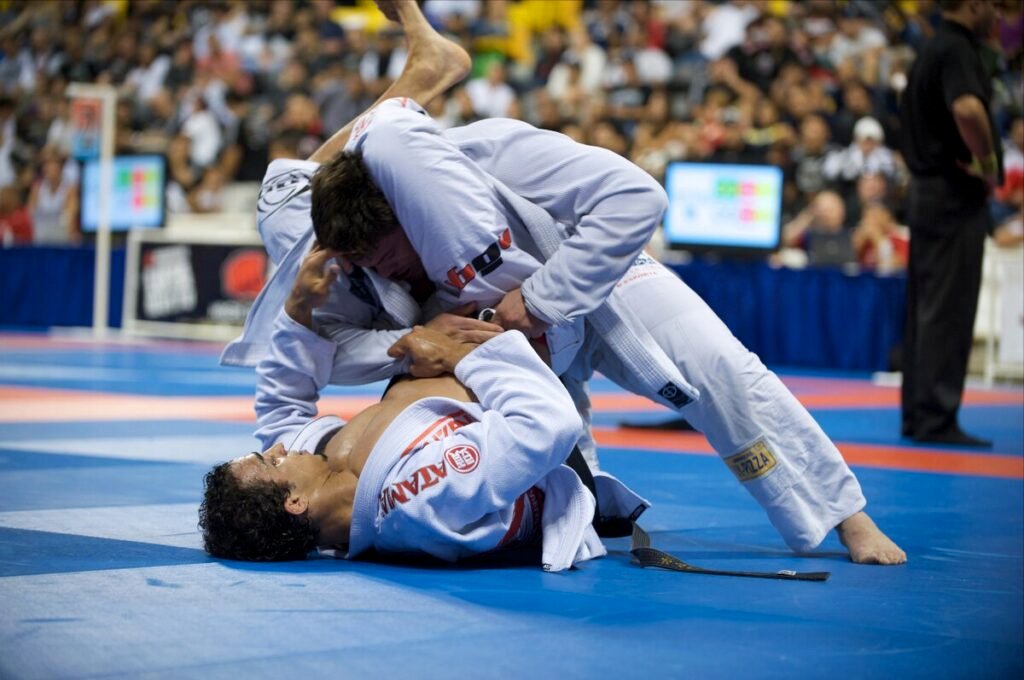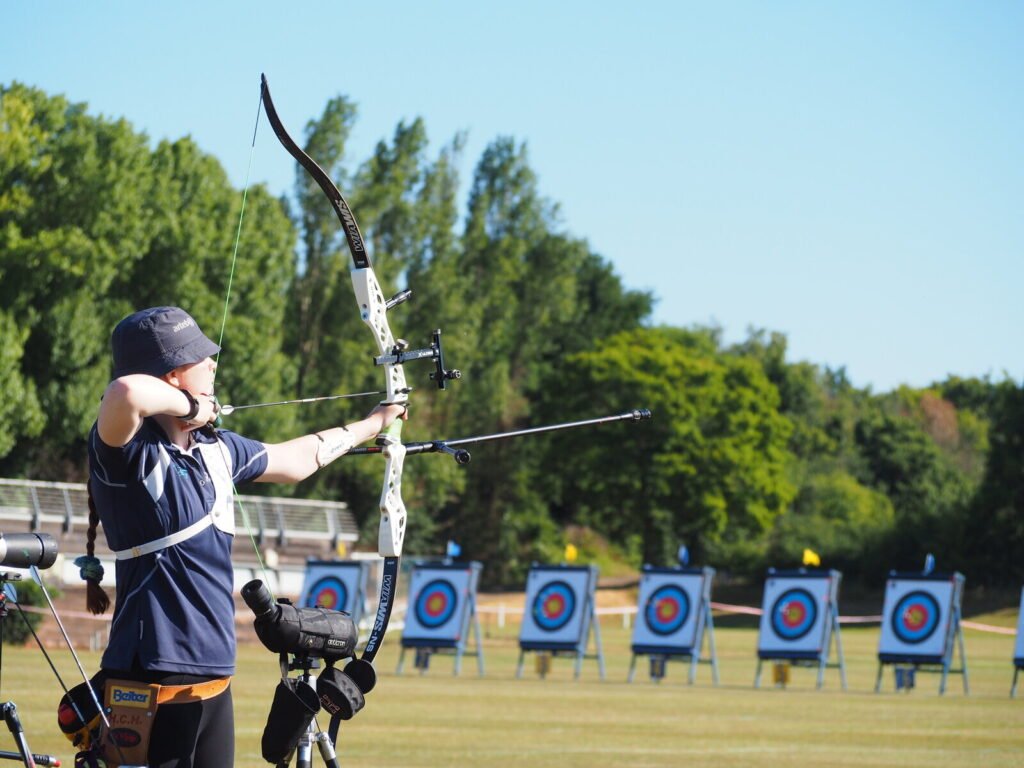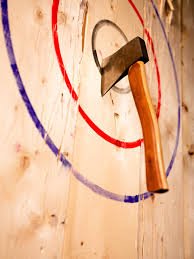In an age where life feels increasingly digital, loud, and artificial, many men are quietly turning to something older — something real. Not therapy apps or breathing trackers, but primal rituals. Tactile, sweat-soaked, grit-filled hobbies that reconnect us with the warrior within.
These aren’t just hobbies. They’re mental weapons — tools that sharpen your mind, forge discipline, and help you handle chaos with calm precision.
Let’s dive into five powerful tactical hobbies that don’t just boost focus… they change how you carry yourself in every room you enter.
1. Jiu-Jitsu: Calm Through Combat
Jiu-jitsu isn’t about throwing punches — it’s about controlling chaos.
It’s a close-quarters grappling art where strength takes a backseat to leverage, strategy, and breath. You’re constantly problem-solving while someone’s trying to submit you. Sound stressful? Strangely, it’s the opposite.
Once you’re on the mat, everything else fades. Deadlines, texts, and to-do lists vanish. All that exists is your breathing, your position, and your opponent’s next move.

Why It Works:
- Teaches ego control: you tap out often, and that’s a feature, not a flaw.
- Builds patience under pressure.
- Deep human contact that’s missing from modern life.
Bonus:
Training 2–3x a week builds serious functional fitness without needing a gym or mirrors.
🧠 Modern Warrior Mindset: You don’t panic in chaos — you find patterns. That’s real-world confidence.
2. Archery: Stillness in the Draw
There’s something primal about pulling a bowstring. It’s not just Robin Hood nostalgia — it’s ritual. It’s breath, aim, tension, and release. And when done right, archery becomes moving meditation.
Each shot is a lesson in focus. You don’t shoot arrows when your mind’s racing — you calm your thoughts to match your breath. The tighter your focus, the better your accuracy. And the better your accuracy, the more your brain wants to stay locked in.

Why It Works:
- Forces you into the present moment.
- Builds rhythm, patience, and spatial awareness.
- Hits the “flow state” without overstimulation.
Whether you’re at a local range or setting up in your backyard, the quiet satisfaction of hitting a target with perfect form is addictive — and therapeutic.
🎯 Gear Tip: Start with a recurve bow to master form. Go compound later.
🧠 Modern Warrior Mindset: You don’t react — you aim.
3. Axe Throwing: The Ritual of Controlled Power
It sounds reckless. But axe throwing is one of the most satisfying stress relievers around — especially when done with precision and control.
Unlike smashing things in a rage room, axe throwing requires composure. It’s all about form, balance, timing, and distance. Miss your mark? Adjust. Over-rotate? Adapt. Every throw gives you instant feedback.

Why It Works:
- Builds micro-discipline and body awareness.
- Offers a healthy outlet for aggression.
- Quick sessions still give your mind a deep reset.
It’s also highly social. Many cities now have axe-throwing leagues or meetups where men can compete and connect in a no-BS, primal way. You don’t need a six-pack — just good form and focus.
🪓 DIY Setup: A backyard target and throwing axes from Amazon get you started for less than $100.
🧠 Modern Warrior Mindset: You channel power. You don’t waste it.
4. Cold Exposure: Mental Grit in Icy Waters
If you’ve seen men voluntarily sit in ice baths or plunge into freezing lakes and thought “why?” — the answer is simple: resilience training.
Cold exposure (Wim Hof style or otherwise) is one of the most raw, direct ways to train your nervous system. When your skin hits icy water, your body panics. Heart rate spikes. Breathing gets erratic. But then, if you stay, something powerful happens.
You adapt. You breathe deeper. You regain control.
That’s not just cold tolerance — that’s real-world stress control in action.

Why It Works:
- Resets your mood and hormones in minutes.
- Builds tolerance to daily discomforts.
- Gives you a “reset” button anytime, anywhere.
And it’s more accessible than you think. A cheap tub + 40 lbs of ice = a cold plunge at home. Or just finish your shower cold for 30 seconds.
🧊 Pro Tip: Try pairing cold exposure with breathwork for deeper benefits.
🧠 Modern Warrior Mindset: Discomfort is a doorway, not a wall.
5. Rucking: Strength Through Simplicity
Rucking is simple: throw a weighted backpack on and start walking. That’s it.
No complicated programming. No fancy gear. But the benefits are huge.
You’re not just walking — you’re carrying weight. That makes your body work harder, your posture improve, and your mind focus. It’s cardio, resistance training, and meditation all in one.

Why It Works:
- Low impact but builds serious endurance.
- Great for clearing your head outdoors.
- Easy to scale up or down.
Ruck solo with a podcast or music. Or go old-school: no headphones, just the sound of your breath and boots.
🎒 Starter Setup: Any sturdy backpack + 20–30 lbs of weight (sandbags, books, plates).
🧠 Modern Warrior Mindset: You carry weight — physically and mentally.
The Science Behind These Hobbies
There’s a common thread in all these skills: voluntary hardship.
Each one triggers your parasympathetic nervous system — the part of your brain that handles rest, recovery, and calm. But here’s the catch: you only unlock that benefit after facing stress head-on.
You expose yourself to controlled challenge — and your body adapts. That’s how you build real resilience.
What They All Have in Common:
- Clear feedback loop (you improve through reps)
- Require presence (no multitasking)
- Forge identity (you’re not “doing something,” you are someone)
Whether it’s a bow, a mat, or an ice tub — you are giving your nervous system a controlled dose of chaos… and learning to thrive inside it.
Bonus Hobbies Worth Exploring
Want to expand your warrior skillset? Consider:
- Sandbag training: Functional, rugged strength training.
- Breathwork: Build lung control and stress tolerance.
- Rock climbing: Full-body puzzle solving + primal instincts.
- Martial arts (Muay Thai, boxing): More striking, less grappling.
- Woodworking or metal forging: Calm craftsmanship with masculine edge.
Tactical Hobbies vs. Trendy Hobbies
Not all hobbies are equal.
Tactical hobbies train your nervous system. They build identity. They change how you move through life. They give you focus, clarity, and control — not just dopamine.
Compare that to endless scrolling, gaming binges, or bar hopping. Those might feel good for a moment. But they drain your energy. These primal hobbies, on the other hand, recharge it.
🔍 Frequently Asked Questions (FAQs)
1. What are tactical hobbies for men?
Tactical hobbies are hands-on, mentally engaging activities that develop physical skill, mental focus, and emotional resilience. Examples include jiu-jitsu, archery, axe throwing, rucking, and cold exposure.
2. Why are tactical hobbies good for mental health?
These hobbies activate your nervous system in healthy ways, helping regulate stress, build discipline, and provide a sense of control. They’re natural ways to boost focus and release tension.
3. Can I start these hobbies even if I’m not in great shape?
Absolutely. Many tactical hobbies like archery or cold exposure require more mental toughness than physical fitness. You can scale them to your own level and build strength over time.
4. How does jiu-jitsu help reduce anxiety?
Jiu-jitsu forces you into the present moment. It combines controlled pressure, deep focus, and full-body movement — which together help calm the mind, release endorphins, and regulate the fight-or-flight response.
5. Is cold exposure really safe?
Yes — if done correctly. Start slowly, avoid staying in too long, and always listen to your body. Cold showers or short ice baths (1–3 minutes) are safe for most healthy adults.
6. What is rucking and how do I start?
Rucking is walking with a weighted backpack. Start with 20–30 pounds and walk for 30–60 minutes. It’s great for building endurance, posture, and mental clarity with minimal gear.
7. Can I do these hobbies alone?
Many of them — like archery, cold plunges, or rucking — are perfect for solo practice. Others like jiu-jitsu offer more community-based interaction, which can be beneficial if you’re looking for connection.
8. Are these hobbies expensive to start?
Most can be started affordably. Rucking just requires a backpack and weight. Cold showers are free. Axe throwing and archery may need some upfront gear, but entry-level tools are budget-friendly.
9. What’s the difference between tactical and traditional hobbies?
Tactical hobbies are more intentional. They usually involve discomfort, skill-building, and stress tolerance. Unlike passive hobbies (e.g., TV or scrolling), tactical hobbies sharpen your focus and train resilience.
10. How often should I practice these hobbies for best results?
2–3 sessions per week is a great place to start. Consistency matters more than intensity. Over time, you’ll build both skill and stress control that carry into daily life.
11. What gear do I need for archery as a beginner?
A recurve bow (20–30 lbs draw weight), a finger tab or glove, arm guard, and some basic arrows. You can find starter kits online or visit a local archery range to test gear first.
12. Does axe throwing require special training?
Not really — but basic safety and form are important. Most urban ranges offer beginner lessons. If throwing at home, follow safety rules and practice with proper wood targets and space.
13. Can cold exposure help with depression or burnout?
Studies suggest cold exposure may reduce symptoms of depression and improve mood by triggering norepinephrine release and increasing blood flow. However, it’s not a substitute for medical treatment.
14. What are some beginner-friendly tactical hobbies?
Start with cold showers, breathwork, rucking, or basic archery. These are low-risk, low-barrier ways to develop grit and focus without needing prior experience.
15. How do I stay consistent with tactical hobbies?
Create a ritual. Keep your gear visible, track progress, and tie your hobbies to morning or evening routines. Remember: it’s not about motivation — it’s about discipline.
Final Thoughts
Modern life wants you comfortable. But too much comfort makes men restless, reactive, and dull.
Tactical hobbies aren’t about being a LARPing commando — they’re about being grounded, capable, and clear-headed. The kind of man who stays calm when others spiral. Who knows how to endure. Who trains for life’s hard moments before they hit.
You don’t need to be perfect. You just need to start moving like a warrior again.
✅ Ready to Sharpen Your Edge?
These hobbies aren’t for everyone. They’re for men ready to trade distraction for discipline. If that sounds like you, join the MindGearMen weekly newsletter for more tactical routines, gear breakdowns, and performance mindset upgrades — all made for real life.
🛠️ Step out of the noise. Step into your edge.


